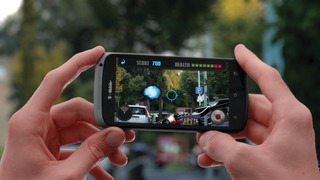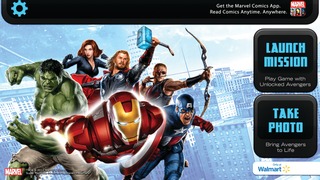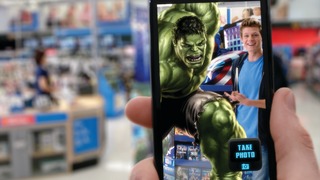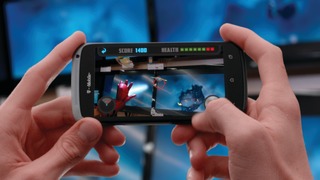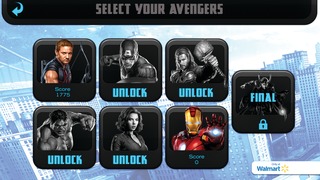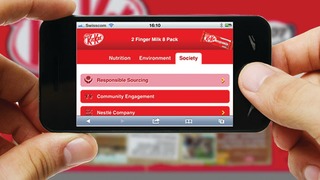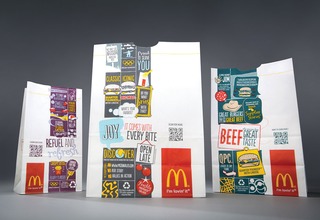High-Performance Packaging on the Upswing
Packagers looking to increase revenues should be on high alert. High-performance packaging, also called electronically enabled packaging or smart packaging, is poised for extreme growth.
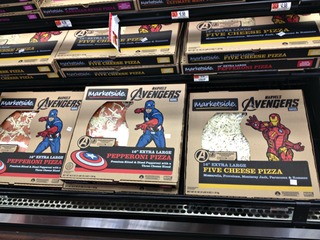
Last spring, Walmart released its Avengers Augmented Reality App to tie in with the release of Marvel’s “The Avengers” movie. After downloading the app from iTunes or Android Market, consumers were able to use their smartphone to lock into signage scattered throughout the store, unlocking the movie’s various superheros. Think hologram. In October, Walmart extended the program, branding its MarketSize pizzas boxes with an Avengers trigger point. Scanning the trigger point releases a very “cool” 3D interactive city.
Augmented reality is just one of the new interactive technologies being used to capture the attention of a consumer marketplace plagued with attention deficit disorder. QR Codes, SnapTags, and Near Field Communication (NFC) are also being used in greater frequency, especially in the consumer packaged goods (CPG) market, but also in pharmaceuticals, food and beverage, and by quick serve restaurants (QSRs).
Packagers looking to increase revenues should be on high alert. High-performance packaging, also called electronically enabled packaging or smart packaging, is poised for extreme growth, says IDTechEx. In its report, “Brand Enhancement by Electronics in Packaging 2013-2023,” IDTechEx reveals that over a 10-year period, the total market for e-packaging devices will grow from $0.03 billion to $1.7 billion. Most of the action will remain in the CPG market; by 2023 a projected 35 billion units for CPGs will have some type of electronic functionality.
According to IDTechEx, nearly 3,000 organizations worldwide are looking to develop technologies to meet the potential demand of this burgeoning market.
Fuisng function with technology
High performance packaging fuses packaging’s basic functions—security/protection, utilization, and graphic communication—with the technology of wireless/mobile media to offer the end user information or an experience that engages the senses.
In anticipation of Valentine’s Day, doughnut chain Krispy Kreme printed QR codes on specially marked doughnut boxes. Scanning the QR code sends the customer to Krispy Kreme’s Facebook page, where they are invited to send a Krispy Kreme Valentine e-card to that special someone.
At IDTechEx’s Printed Electronics 2012 conference, attendees were given a sample of Origami Electronics, consisting of circuits printed on paper that only became functional when the paper was correctly folded.
For the consumer packaged good (CPG) company, e-packaging can improve brand protection, product safety, and inventory control, while enhancing promotional campaigns and bringing product differentiation to a crowded retail store environment.
“Smart or intelligent packaging allows the CPG to engage in conversations with the consumer either at the point of purchase or beyond,” says Colleen Twomey, Assistant Professor in Graphic Communication at California Polytechnic State University, San Luis Obispo. “It allows the consumer to interact with the brand, get coupons, play games, enter contents. CPGs are looking to have the consumer establish brand loyalty through packaging, all taking place through the consumer’s mobile device.”
Packagers, especially those serving the CPG market, will be increasingly expected to offer more than just a box. No longer just a vehicle to hold a product, packaging has moved beyond the purchase and is being used to generate experiences for shoppers, says Twomey. These might include connectivity and/or interactivity with social media, PURLs, movie/video trailers, gaming, and Website information.
Beyond the “ooh” and “ah” factor, printed electronics also have a more practical function—security. Beneath the label of that expensive wine you are drinking might very well be an RFID tag to ensure brand protection. In the food and beverage industry, sensors that track storage temperature or alert consumers to expirations dates are being developed.
Security issues aside, in the CPG market it’s the opportunity to engage with consumers that is generating excitement. The opportunities are nearly limitless, with new developments in conductive substrates and printed electronics technologies (such as OLED lighting, organic photovoltaic, etc.) along with the proliferation of smartphone devices.
According to Pew—more than half of the Americans who own a mobile phone have a smartphone; other industry consultants have that number as high as 78 percent.
No matter what type of high performance printing is deployed, the graphic reproduction of the markers for mobile is critical, says Twomey.
While QR codes are somewhat forgiving, brand managers are trying to make them smaller and smaller—the real estate on the packaged good is extremely valuable. The smaller the code, the more difficult it can be to reproduce, notes Twomey.
“You need to have fidelity; you need to make sure the scan actually works,” says Twomey. “When you add design into the QR code, you have to make sure you aren’t interfering with scanability of the code.”
SnapTags, similar to QR codes in functionality, use a 2D company logo or customizable icon instead of a code to drive the consumer to a Website or to unlock exclusive content and offers content. If a smartphone is used, the graphic is scanned; other mobile devices “snap” the logo with a camera phone to start the process.
SnapTags aren’t free; the company SpyderLynk will build a mobile marketing plan, including the SnapTag, for a cost. SnapTags are generating a lot of heat—in addition to their more crowd-pleasing graphics, the CPG company is able to tap into a lot of metrics relating to the consumer interaction with the SnapTag. Plus, to activate, the consumer’s mobile device doesn’t need to be a smartphone—widening the playing field.
Near Field Communication (NFC) is not new; every time you use your EZ Pass, you are engaging the technology. Off the highway, to activate a NFC promotion, the consumer needs a 4G phone with a NFC reader. It’s not print dependent; in fact, one of NFC’s more popular uses is in mobile payments. But it does hold some promise for increased use in CPG market, as NFC allows the consumer to access information with a simple tap or wave of the phone near a package.
Augmented reality is just in the beginning of its ascent. “This might be the ultimate in consumer engagement,” says Twomey. “Augmented reality engages the consumer at the point of sale, it has the unique and viral factor, and it enables content to be delivered without sacrificing package real estate.”
When the consumer buys a product with a trigger point for an augmented reality experience, the brand continues to interact with her even after she leaves the store. “It’s a great way to establish brand loyalty and engagement,“ says Twomey.
Nestlé Empowers Consumers with New Digital Labelling Scheme
Consumers in the United Kingdom will be the first to benefit from a new global initiative by Nestlé to give people instant access to information about the nutritional profile and environmental and social impacts of its products.
Anyone who buys a multi-pack of two-finger Kit Kat chocolate bars in the UK and Ireland will be able to find out more about what they are made of, how they fit into a balanced diet and lifestyle, and how they were produced, just by scanning the packaging with a smartphone.
The Kit Kat multi-packs will carry a Quick Response (QR) code that will take consumers to digital sites where they can find more detailed information about the product than would normally be available on a pack.
Nestlé plans to roll out the QR codes across its product portfolio in both emerging and developed markets to help people make more informed choices about what to purchase or consume.
Information at your fingertips
“We hope that consumers, wherever they are in the world, will use these QR codes to learn more about our products,” said Patrice Bula, Nestlé’s Head of Strategic Business Units, Marketing and Sales.
“We have a wealth of information about the nutritional value and the environmental and social impacts of what we produce, and it makes sense to share that with consumers.”
A QR code is a type of barcode which consists of small black blocks arranged in a square pattern against a white background.
When it is scanned with a smartphone it opens a mobile application or a website.
Consumers who scan the QR code on a Nestlé product will be able to obtain additional information relating to how the product fits into a healthy lifestyle, including portion guidance, recipe ideas, and its role in a balanced diet.
They will also be able to access facts about its impacts, such as how much water or energy is used in its entire life cycle.
Clear and understandable labelling
Seven years ago Nestlé became the first company to introduce a ‘nutritional compass’ on its packaging, designed to be an informative guide to help consumers choose between products.
The new QR code initiative is a natural extension of the company’s commitment to communicate the importance of responsible nutrition, moderation and variety in food habits.
The majority of codes will appear on packs on a space within the Nestlé nutritional compass, which is already present on 97% of the company’s products worldwide.
McDonald's Launches New Global Packaging Designs
McDonald's is unveiling new packaging designs on all carry-out bags and fountain beverage cups with QR codes. This initiative is the latest step in the company's ongoing commitment to provide consumers with information to help them make informed choices. The launch begins this week in the U.S. and will continue rolling out worldwide through 2013, with the text being translated into 18 different languages.
As a company that has provided nutrition information for more than 30 years to its customers, the new packaging is designed to communicate brand stories in an engaging and modern way. A blend of text, illustrations and a QR code will deliver interesting facts about the brand and make nutrition information easily accessible from mobile devices.
"Our new packaging is designed to engage with customers in relevant ways and celebrate our brand," said Kevin Newell, McDonald's Chief Brand Officer. "Customers tell us they want to know more about the food they are eating and we want to make that as easy as possible by putting this information right at their fingertips."
In addition to gathering consumer input on these designs, McDonald's consulted its Global Advisory Council, a group of independent advisors in the areas of nutrition, public health and fitness. These outside experts emphasized the importance of providing access to nutrition information, and support using the new packaging to directly connect customers to information about McDonald's menu.
McDonald's was one of the first quick-service restaurants to introduce nutrition information on packaging at the 2006 Olympic Winter Games in Torino, Italy. This latest initiative builds on the company's history of providing nutrition information to customers, also available through in-restaurant menu boards, brochures, tray liners and a variety of digital platforms such as mobile web, apps, kiosks and desktop.
McDonald's has a long record of sustainability leadership action to create positive change. Nearly 80 percent of the company's consumer packaging in the majority of McDonald's markets is made from renewable paper or wood-fiber materials.

